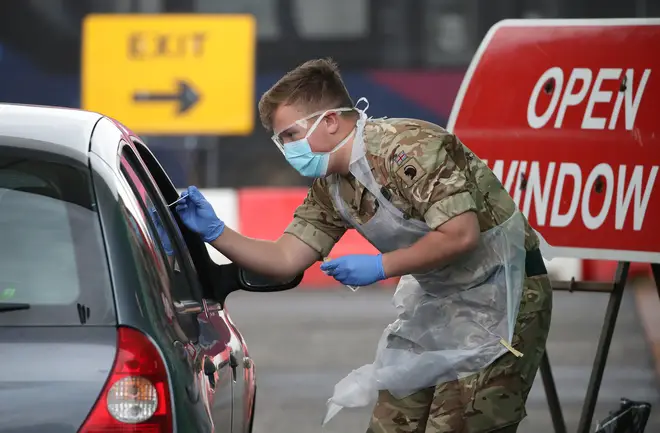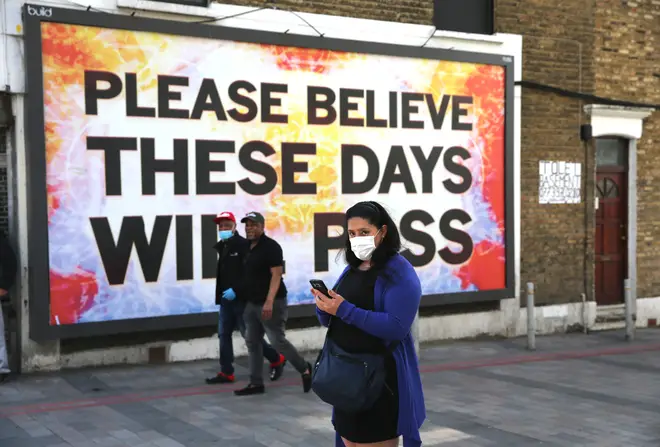
Henry Riley 7pm - 10pm
4 May 2020, 14:05

What is the R rate?
In order to avoid the "disaster" of a second peak in coronavirus cases, the UK must keep the R rate below one. But what is the R number? And why is it so important?
A key focus of the UK's response to the coronavirus outbreak is ensuring the R rate remains below one.
On Friday 15 May, it crept up to between 0.7 and 1, sparking concerns that the infection rate was worsening.
However, health experts say the R number is just one figure the government uses for informing public health policies and its rise would not yet necessarily mean stricter lockdown measures would be reintroduced.

The R number stands for the rate of infection. It represents the average number of people one infected person passes a virus on to.
It is used to describe the rate of infection of all viruses and needs to be decreasing before current lockdown measures can be lifted.
Keeping the rate "as low as we possibly can" is vital for beating coronavirus. If R is above 1 then people will pass it on to more than one individual on average, meaning the spread of the virus is accelerating.
However, if it is below 1 it means that people are passing on the virus to less than one other person on average, meaning overall the rate of infection and therefore the number of people with the virus, will begin to decrease.
In March, at the peak of coronavirus' infection rate, R stood at around 3. But since social distancing measures were introduced it dropped below 1, standing between 0.5 and 0.75.
However, as of Friday 15 May, it is now between 0.7 and 1.

Boris Johnson suggests Brits could be asked to wear facemasks
If the R number gets too high, then it will be difficult to stop coronavirus spreading.
For example, if the R stands at 0 then each infected person will likely pass the virus on to nobody else. If it stands at 1, then each person who catches it will pass it on to one other person.
However, if the R jumps to 2 the infection rate doubles, meaning a rapid spread of the disease from person to person around the country.
Keeping the R below 1 means the UK will be better placed to protect the NHS from becoming overrun. However, maintaining a low R number does not mean social distancing measures will be automatically relaxed.
In fact, each time a lockdown measure is lifted, the R number is likely to rise as people come into contact with each other more often.

The World Health Organisation estimated that coronavirus had a rate of infection that stood between 2 and 2.5 in March. Seasonal flu, by comparison, is estimated to be around 1.3.
However, these figures cannot be set in stone as there are multiple other factors, such as population density, a country's response and the susceptibility of a population among other things that can determine how quickly diseases spread.
Research published by Imperial College London at the start of April showed Covid-19 having an R rate of somewhere between 3 and 4.6 before lockdown measures were introduced.
Other diseases have varying R values. For example, measles has a reproductive rate of between 12 and 18; chicken pox, though less deadly, has an R rate of between 10 and 12; and Ebola, though far more deadly, has a fairly similar R number to coronavirus.
SARS, mumps and smallpox all have higher R values, whereas MERS has a smaller reproductive figure but is far more deadly.